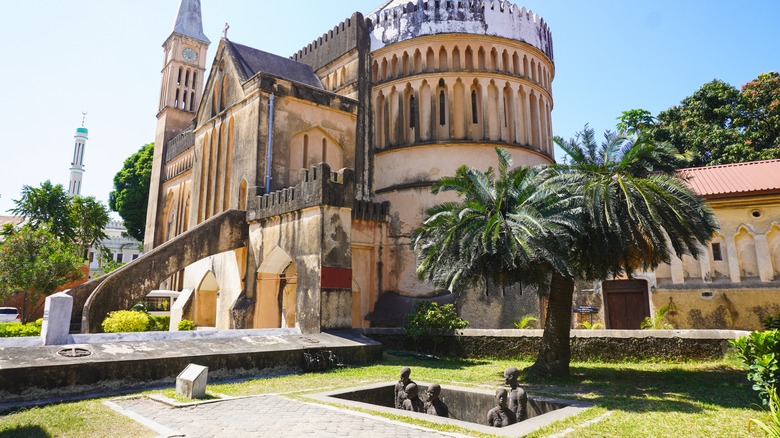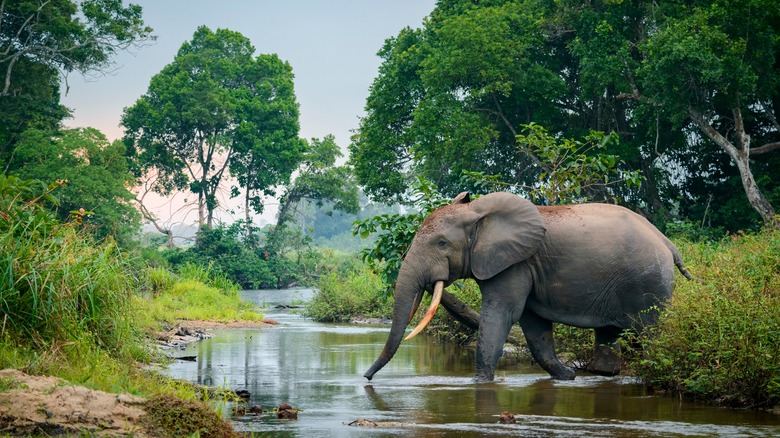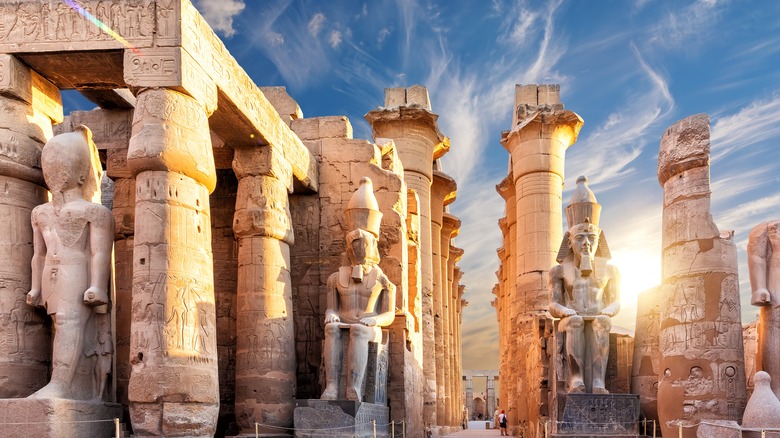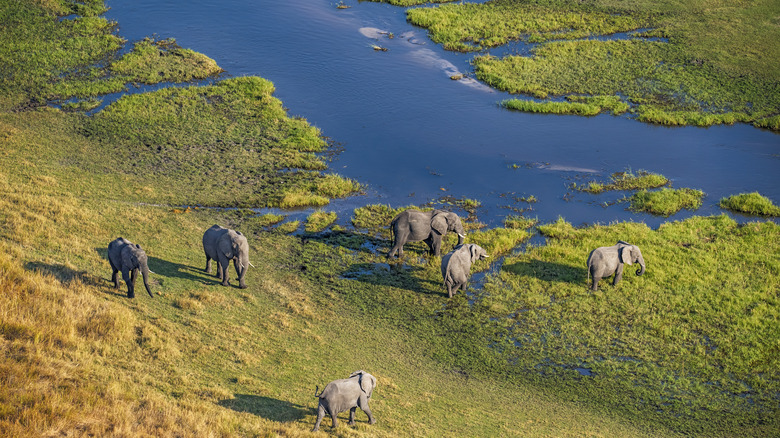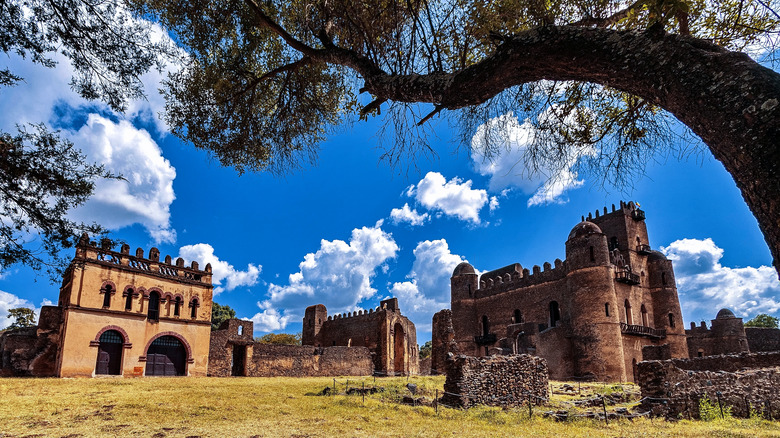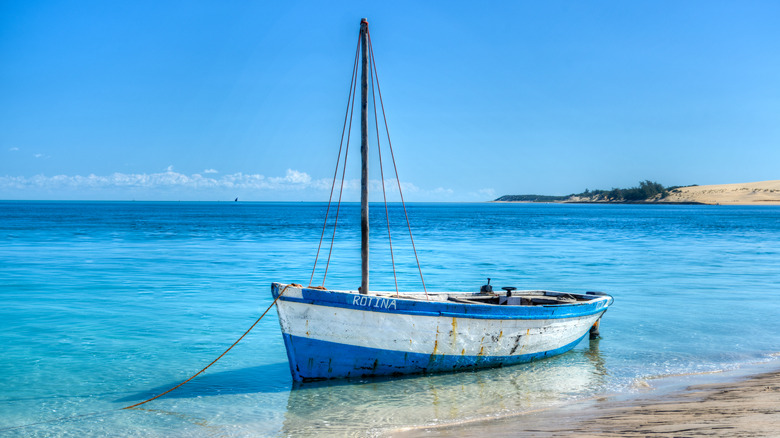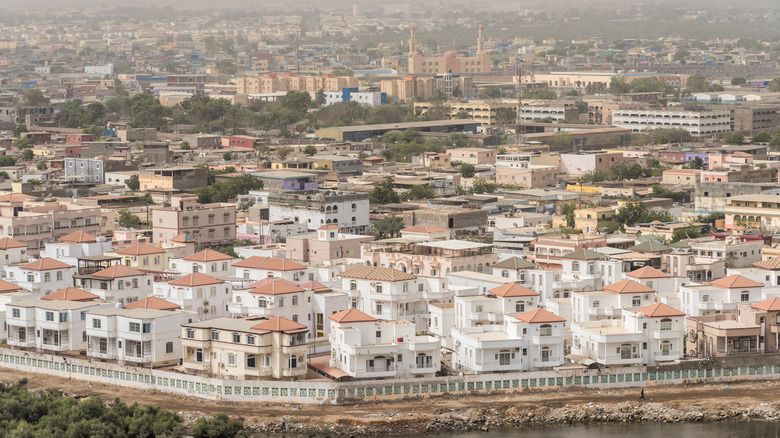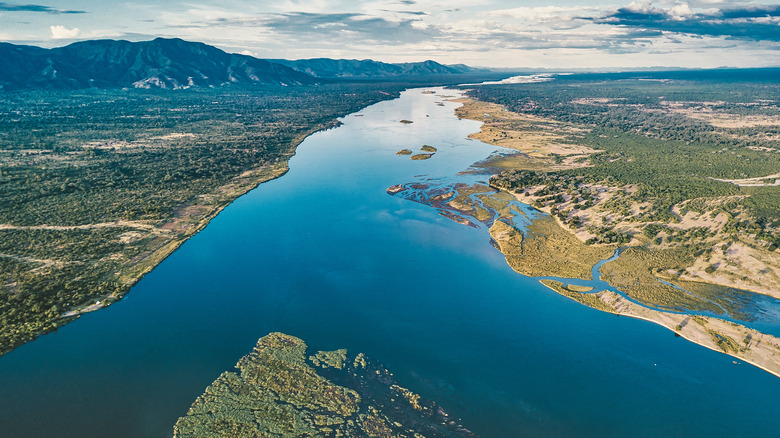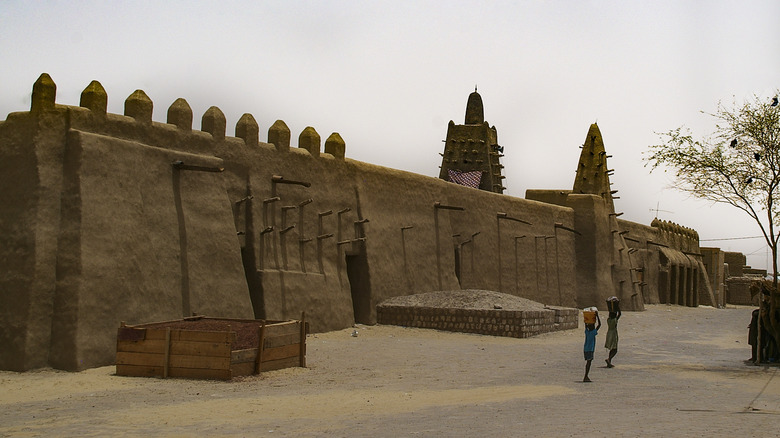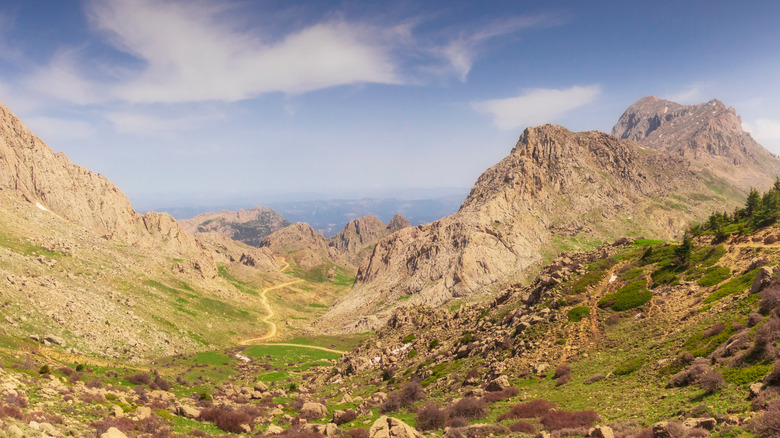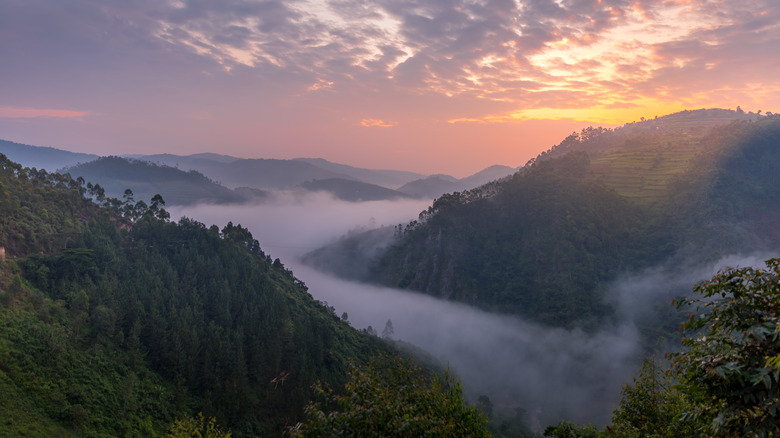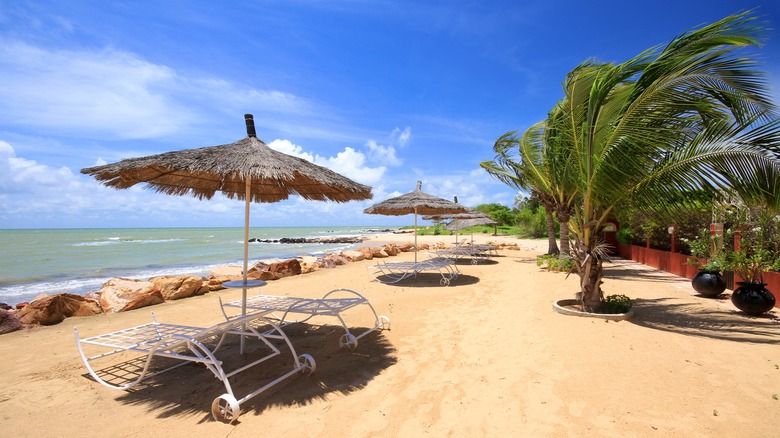Immerse Yourself In African History With These Underrated Experiences
The African continent boasts a massively diverse landscape. Both in the hugely diverse cross-section of people who call the landmass home and the kaleidoscope of natural environments, Africa is rich beyond imagination. Fifty-seven million visitors made the African continent a part of their vacation plans in 2019. Yet so many beautiful, historical, and vibrant places across this part of the world remain underexplored. Tourists flock to South Africa, Egypt, and Tunisia, but leave the central corridor largely undiscovered.
The continent has so much to offer to those looking for an unforgettable holiday, and many of the most spectacular places across the multifaceted environment don't suffer from spoilage that often comes with the oversaturation by tourists. From coast to coast, Africa offers true marvels of human and natural creation. The continent is considered the cradle of civilization, and it's home to untold miles of pristine safari wilderness. Whether you want a secluded beach holiday, an immersive trek through history, or a low-traffic safari, these underrated experiences across Africa provide something spectacular that you're unlikely to ever forget.
Learn about the slave trade's brutal history in Zanzibar's Stone Town
A tour of Stone Town will leave you absolutely speechless. As such, it's a great place to begin. Stone Town exhibits all the hallmarks of a colonial island town. The streets are built with gigantic stone pavers, while the buildings feature plastered walls and soaring wooden beams to create a vibe that you could mistake for a movie set. But beneath the splendor of Stone Town's layout lies a dark history of oppression and human suffering.
The locale once served as the eastern hub for the African slave trade, with countless souls being taken to the island as a staging port that was naturally difficult to escape from. By the 1850s, there were as many as 70,000 slaves in Zanzibar. The practice was abolished soon after, with Zanzibar acting as the last permanent marketplace of humans in East Africa until 1873. However, an image taken in 1907 shows a British sailor removing a newly freed slave's leg irons. The photograph, among many other images and artifacts, can be seen in Christ Church Cathedral, a monument built in 1879 right on top of the traumatic scar.
The entire complex is filled with artistic memorials to those caught in this nexus of terror. With a renewal project that commenced in 2015, this historical place will remain a bright point illuminating a lesser-known history (compared to that of West Africa) that cannot be forgotten.
Trek through Odzala-Kokoua National Park in the Republic of the Congo
The Republic of Congo is a vastly underrated tourist destination. It's a little out of the way for travelers, with a location roughly halfway down the continent, placing it in tourism limbo between the hotspots of North Africa and its extreme south. Also, just next door is the Democratic Republic of Congo, a country that shares much of the same name and is far less safe for tourists to explore. Combined, these features make it low on the to-see lists of all but the most adventurous and in-the-know wanderers. Even so, RoC is home to Odzala-Kokoua National Park. This is a protected area within the Congo Basin, the world's second-largest rainforest, and a supremely fertile landscape that's teeming with hundreds of bird species, as well as land mammals of all kinds. Of particular note are the western lowland gorilla and forest-dwelling elephants.
The area supports both the local community and the critically endangered species that call the landscape home. The Lossi Gorilla Sanctuary plays a key role in protecting these majestic animals, for instance, and almost all of the sanctuary's permanent staff — who work tirelessly to care for this natural environment — are Congolese. While this natural environment should be top of the list for wildlife enthusiasts, particularly those passionate about conservation, the national park remains a relatively unknown destination for many world travelers.
Sail down the Nile to take in Luxor
An Africa bucket list destination for many, Egypt is certainly a fascinating destination, and in 2019, the country saw an influx of 13 million tourists, placing it ninth in the world for most visitors. The pyramids, Sphinx, and the Nile River Delta all act as a magnetic draw for eager explorers looking to take in the majestic sights left behind by geological processes and ancient human effort.
The Nile is easily recognized as the source of Egyptian livelihood. This was true in ancient times, and it remains a certainty today. Looking at a map of the country or exploring it on foot gives you a sense of the intense fertility that the Nile brings to an otherwise arid place. The ancient civilization that once dominated this part of the world knew that, and if you travel about 300 miles farther south down the Nile, you'll arrive at another one of the Ancient World's spectacular treasures: Luxor.
While you could drive, fly, or take the train from Cairo to Luxor, you can also sail on a 12-day boat tour to follow an ancient passage taken for millennia. But, no matter how you arrive, you're sure to be blown away by Luxor's temples and tombs. The city has been called "the world's greatest open-air museum." It's home to the Valley of the Kings's 63 tombs, which include the tombs of King Tutankhamun, Thutmose III, and Nefertiti, as well as The Temple of Hatshepsut and the famed Karnak and Luxor Temples.
Explore Botswana's Okavango Delta by traditional canoe
The Okavango Delta has the honor of being UNESCO's 1,000th World Heritage Site and has been named one of the Seven Natural Wonders of Africa (a huge feat, considering the breadth of rich environments found here). Botswana is known for its safari tours, but the landlocked country is often overshadowed by the tourist infrastructure of South Africa and the spectacular reserves farther north in Kenya and Tanzania.
However, Botswana's Okavango Delta is the largest inland river delta on the planet, spanning an area greater than 15,500 square kilometers (almost 6,000 square miles). The interwoven network of waterways trickles across the land in endlessly random patterns that are constantly rewritten as seasonal floodwaters inundate the fertile delta. The delta's waters dissipate into the Kalahari Desert, spreading throughout the northwest corner of the country, ensuring the survival of surrounding life.
There are over 1,000 plant species here, as well as hundreds of bird, mammal, reptile, and fish species that come together — including at least 52 species previously unknown to researchers — to form the delta's thriving ecosystem. The delta also provides water to around a million people in Botswana, Angola, and Namibia. Visitors can explore the thriving natural environment through a few different avenues. A tour in a wooden mokoro (a traditional dugout canoe created by the local Wayei people) is an unforgettable way to experience this amazing wetland landscape.
Traverse palace complexes in Gondar, Ethiopia
Ethiopia is one of human history's most intricately layered sites. Scientific research continually posits this slice of East Africa as potentially being the original home of all humanity. The country is dotted with forests, mountains, and deep gorges that make for a breathtaking — albeit somewhat taxing — place to explore by car. Addis Ababa is a capital city of rich cultural delight, with traditional food options found around every corner. But getting out of the city and heading north yields some of the most inconceivable structures you're likely to find anywhere. Gondar — only about 400 miles north of the capital — is a 13-hour drive that should be broken up into multiple days on the bumpy roadways, with experience as a guide.
Once you've reached this northern region, a day at Gondar will provide a peek back into antiquity marked by unusual clarity. The palaces of Gondar date back to 1636, and rather than improving on existing structures or rebuilding to suit evolving needs, new rulers simply built new palatial dwellings. The result is a sprawling landscape of 20 palaces and castles across six primary sites. The area is known by a few names, including Fasil Ghebbi, The Royal Enclosure, and Gondar Castle. Walking through these structures is like falling through a portal in time, perhaps yielding it the moniker "the Camelot of Ethiopia." Nearby, in Lalibela, you can visit another World Heritage Site in the form of 11 immaculately chiseled-out churches (dating to the 13th century), cleaved directly from the area's rock faces.
Search for dugongs around Mozambique's Bazaruto Archipelago
Found just off the coast of Mozambique's lower extent, the Bazaruto Archipelago is a set of Indian Ocean islands that showcase the pristine waters of this part of the world in spectacular fashion. Mozambique is often overlooked in favor of more popular safari-going destinations, but the Portuguese-speaking country on the eastern coast of lower Africa is a fabulous destination for travelers as well. These islands can make for an unforgettable beach holiday that includes amazing swimming, diving, and snorkeling.
Among the most breathtaking of experiences you'll find here — even more stunning than the water itself — is the sight of a dugong. While it might sound like something out of a Pokémon game, the dugong is a mercurial cousin to the familiar manatee that makes its home along American coastal waterways. Dugongs are somewhat shy, and while they once roamed the Indian Ocean in droves, their numbers have dwindled drastically low. The Bazaruto Archipelago is one of the last places they can be found with any regularity (among some 2,000 fish species that make the islands their home, too), and divers (or even snorkelers) in the know make the islands a high priority when planning a tropical maritime getaway.
Explore the cultural amalgamation of Djibouti City
Djibouti is a coastal African nation that all too often flies under the radar. Sandwiched between Ethiopia and Somalia, Djibouti serves as the closest point between the continent and the Arabian Peninsula just across the sea. As a result, Djibouti has been a cultural conduit between the two landmasses for centuries — and perhaps even longer since it's likely the site of Punt, an ancient Egyptian trading partner.
Djibouti remains an underappreciated destination for culture and exploration, with only about 114,000 tourists visiting the African alcove in 2021. Moreover, many of those coming to the country are drawn by links to service members stationed here. Five countries, including the United States, China, Japan, Italy, and France (which once laid colonial claim to the country), operate military bases in Djibouti. This feature has transformed Djibouti into a modern melting pot of foreign populations alongside its role as a hub dating back to antiquity.
Djibouti is a small nation, and its capital city (also called Djibouti) is favorably located along the edge of the landscape's Gulf of Tadjoura. Its coastline is home to whale sharks that migrate consistently through its waterways. The Red Sea is just north of Djibouti City's sheltered inlet and is one of the preeminent diving locations the world over. This makes Djibouti the perfect jumping-off point for exploring the vast influences of human interaction and some of the natural world's greatest aquatic treasures.
Go on a safari in Zambia's Lower Zambezi National Park
Situated in the heart of south-central Africa, Zambia is often passed over when planning a trip to the continent. Zimbabwe enjoyed 630,000 tourists in 2020, while South Africa sees millions of visitors regularly. Although often overlooked, Zambia is a budget-friendly destination for those planning a safari on the African continent (as low as $150 per day versus a $220 per day estimate in South Africa).
Not to be confused with Zambezi National Park in Zimbabwe, Zambia's national park is a much less often traversed natural gem. Spanning nearly 4,100 square kilometers (1,583 square miles), Lower Zambezi National Park is a wide open space that sees much of its wildlife concentrated around the valley floor. Moreover, the park offers a perfect landscape to stargaze from as well. It's completely removed from any built-up areas, though the infrastructure for visitors is comfortable.
Drink in the history of Mali's ancient Timbuktu
Timbuktu is a place overflowing with the history of early African Islam. The Djinguereber Mosque (followed by two others) was built by Mansa Musa after a trip to Mecca beginning in 1324, and Timbuktu is perhaps one of the single most important centers of Islamic scholarship on the continent (contending with Egypt's al-Azhar). The region has seen considerable instability, however, with insurgency issues dominating the conversation for outsiders in recent years. It's far safer today than 10 years ago, but concerns remain even to this day.
Getting to the city is one of the greatest obstacles that keep it severed from an already under-visited country in Saharan Africa. The road brings you along a 1,000-kilometer (622-mile) voyage that requires a roughly 16-hour commitment. Timbuktu was established as a trading camp around the year 1100, eventually growing into a center of Islamic scholarship for practitioners and pilgrims living and traveling in West Africa. The community still builds with locally crafted mudbrick, layering the old and new in a fascinating tapestry that defies the ages.
If Timbuktu isn't doable for your plans or comfort level, Djenne is a wonderful alternative destination of gleaming Islamic history that isn't flung out into the remote northern desert. Similarly, it's only about half the distance and won't demand that you set off along roads that still are only loosely corralled under government authority.
Hike the Atlas Mountains in Algeria
Algeria is yet another destination that's overshadowed by its neighboring nations. Sandwiched between Tunisia — a highly regarded beach resort destination — and Morocco (is any introduction really needed?), Algeria is simply passed over. It's also a place that remained marked by a history of violent rebellion, first in the 1950s and '60s in expelling French imperialists, and then in a decade-spanning civil war throughout the '90s.
Even so, Algeria today is a safe and truly spectacular place to visit. The country is home to Roman ruins and houses the original resting place of Queen Cleopatra and Mark Antony's daughter, Cleopatra Selene. You can also see prehistoric art painted in sandstone rock faces, adding to Algeria's monumental historical significance. Moreover, Algeria is now also considered an adventure travel destination, with the Atlas Mountains (and others in the country, including the Hoggar Mountains in the south) occupying a role in the limelight. The unvarnished beauty of the country stands in stark contrast to its sometimes overly touristy neighbors.
Trek through Bwindi Impenetrable Forest National Park in Uganda
Uganda poses a unique hurdle for all but the most determined explorers. The country is a malaria hotspot, compounded by the fact that much of the landscape borders a gigantic tropical lake. However, if you're lucky enough to have an opportunity to travel to Uganda, you're not likely to be disappointed. The genocide in Rwanda looms large over the American psyche when considering a visit to countries in this part of the continent. And recent legislation that's bitterly hostile to Uganda's LGBTQ population has cast another dark spot on one of Earth's great natural treasures. But the immaculate Bwindi Impenetrable Forest National Park calls to visitors with gravitational magnetism all the same. Inside the forest, you'll spend your time silently wandering in search of Ugandan mountain gorillas, of which less than 900 remain.
The deafening quiet of the forest acts as a transporter to what feels like another dimension. Here, all that matters is the serenity of the forest. Thankfully, a trip to Bwindi is a great way to support the local population and ensure that it remains a protected sanctuary for gorillas and a plethora of other species that call the region home. A tour here is also far less expensive than in neighboring Rwanda, making the Ugandan home of the mountain gorilla a more budget-friendly destination in Africa, too.
Relax on Senegal's Saly beaches
Senegal might not be high on your list of places to visit, but it definitely should be. In addition to the House of Slaves museum and memorial on Dakar's Goree Island and Dakar's IFAN Museum of African Arts, dating back to 1936, you can relax along what has come to be known as Senegal's Riviera. Saly is just 15 to 20 minutes away from Dakar's Aeroport International Blaise Diagne (DSS), making it a convenient spot to explore as well, unlike many of these destinations that remain underappreciated as a result of their isolation.
Over a million visitors come to Saly every year, but this still pales in comparison to the beachgoers who flock to French, Italian, or other Mediterranean shores just a short hop north. Similarly, even during the more popular months of the year (from November to April), the beaches and town are unlikely to feel as if they're swelling with tourists. The community remains a laid-back environment, even during peak season.
Moreover, Saly is a distinctly African destination that celebrates its cultural heritage rather than attempting to create a clone of other beachside resorts that are naturally European by design. Saly is a budget-friendly resort town that offers five-star service without the luxurious price tag that you'd expect of this caliber. Swimming, sailing, or fishing aren't the only activities here, though. There are a few golf courses around for those inclined to book a tee time, and spa days can make for an indulgent break from the Sun and sand.

